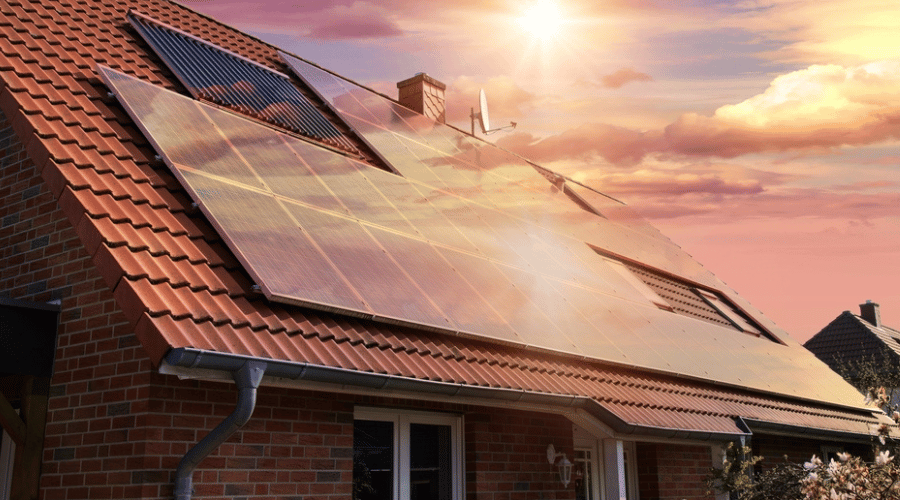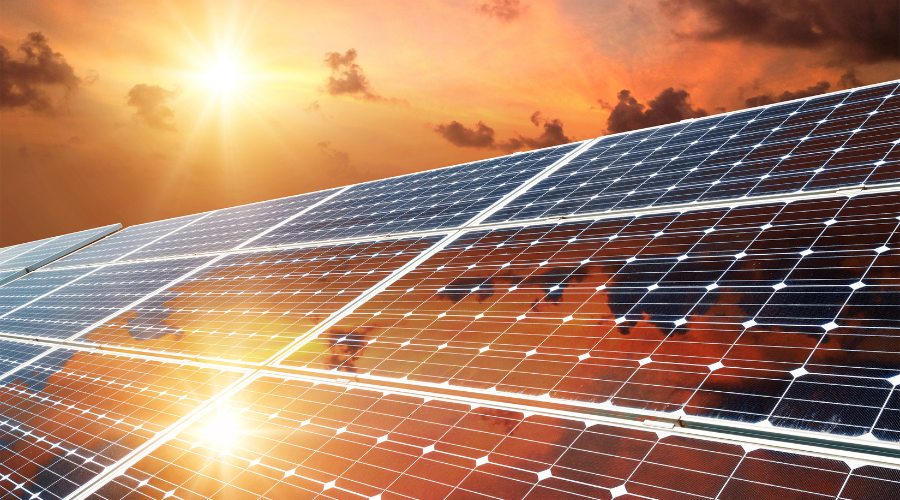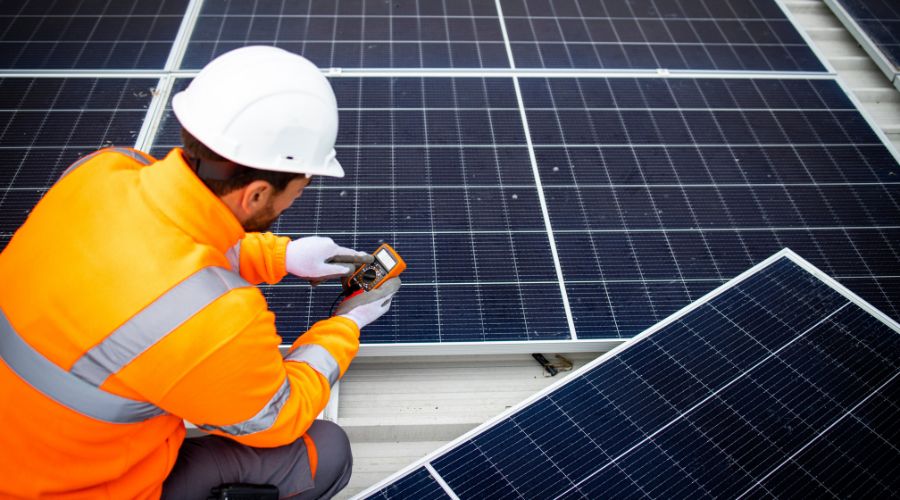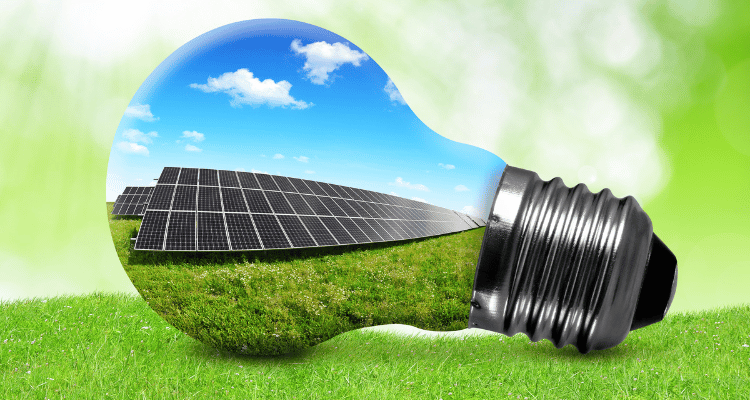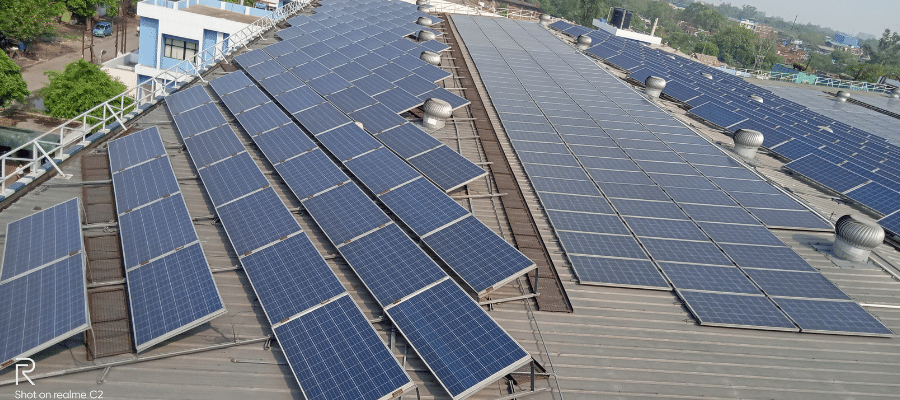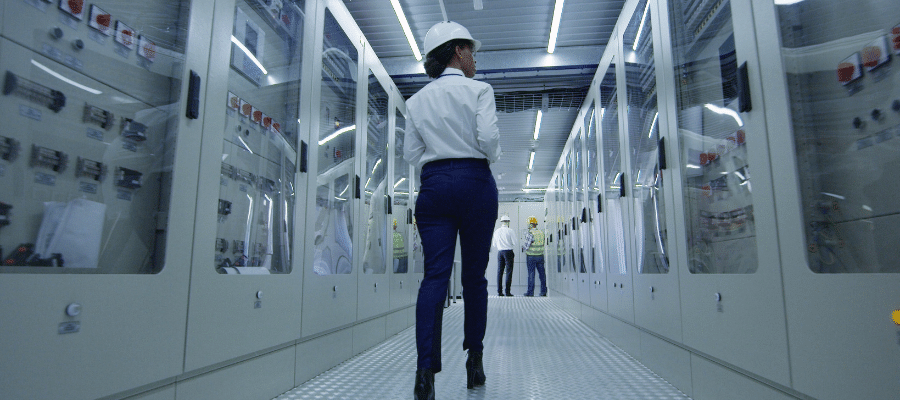
Solar panels have emerged as a powerful solution in the quest for renewable energy, playing a pivotal role in addressing climate change and reducing our dependence on fossil fuels. Understanding the science behind solar panels and how they work becomes increasingly important as the world seeks sustainable and clean energy sources. This article will delve into solar energy fundamentals, the photovoltaic effect, and the components that make up solar panels.
Additionally, we will discuss the installation and maintenance process and the latest advancements in solar panel technology. By the end of this article, you will have a solid grasp of how solar panels harness the sun's energy, their environmental and economic benefits, and their potential to shape a greener, more sustainable future.
The Science of Solar Energy
Solar radiation and its components Solar radiation, also known as sunlight, is the primary energy source for solar panels. The sun emits electromagnetic radiation across various wavelengths, including ultraviolet (UV), visible, and infrared (IR) light. While the visible light spectrum contributes the most to solar energy, UV and IR light generate electricity in solar panels.
Factors affecting solar energy output The amount of solar energy that reaches the Earth's surface varies depending on several factors. These include the time of day, geographic location, atmospheric conditions, and the sun's angle.
Solar energy output is generally highest at noon when the sun is directly overhead and lower in the early morning and late afternoon. Furthermore, regions closer to the equator receive more solar radiation than those at higher latitudes. Atmospheric conditions, such as cloud cover and air pollution, can also impact the amount of solar energy available for solar panels to harness.
Photovoltaic effect: the basis of solar panels
The history of the photovoltaic effect was first observed by French physicist Edmond Becquerel in 1839. He discovered that certain materials generate a voltage when exposed to light, creating an electric current. This phenomenon is the foundation of modern solar panel technology.
How the photovoltaic effect converts sunlight into electricity
The photovoltaic effect occurs when photons of sunlight interact with electrons in solar cell materials, such as silicon. When a photon strikes an electron, it can transfer its energy, allowing the electron to break free from its parent atom. The freed electron then moves through the solar cell material, creating an electric current. This electric current can be harnessed and used as a power source by connecting a load to the solar cell, such as an electrical device or the grid.
Components of Solar Panels
Solar panels are composed of several elements that efficiently convert sunlight into usable electricity. This section will explore the key components that make up a solar panel, including solar cells, solar panel modules, and additional equipment required for a fully functional solar power system.
Types of solar cells
Monocrystalline
Monocrystalline solar cells are made from a single crystal of high-purity silicon, resulting in a uniform and smooth appearance. They are known for their high efficiency and durability but can be more expensive than other types of solar cells.
Polycrystalline
Polycrystalline solar cells are made from multiple silicon crystals that have been melted together. These cells have a speckled blue appearance and are generally less efficient than monocrystalline cells. However, they are more affordable and still provide reliable performance.
Thin-film
Thin-film solar cells are made from layers of semiconductor materials, such as amorphous silicon, cadmium telluride (CdTe), or copper indium gallium selenide (CIGS). They are lightweight, flexible, and can be manufactured at a lower cost than crystalline solar cells. However, they typically have lower efficiency and shorter lifespans.
Structure and function of solar cells
A solar cell is a semiconductor device that converts sunlight into electricity through the photovoltaic effect. It consists of n-type and p-type silicon layers, which create a junction where electrons can move and generate an electric current. The top layer of the solar cell is coated with an anti-reflective coating to minimize reflection and maximize the absorption of sunlight. Metal contacts on the top and bottom layers allow for collecting the electric current produced by the solar cell.
Solar panel modules
How solar cells are combined to form modules
Solar panel modules are done by connecting multiple solar cells in series and parallel configurations to achieve the desired voltage and current output. These interconnected solar cells are then encapsulated in a protective material, such as ethylene-vinyl acetate (EVA), and sealed with a transparent front cover, usually made of glass, to protect them from environmental factors.
Efficiency and performance of solar panel modules
The efficiency of a solar panel module refers to the percentage of sunlight converted into electricity. Factors such as solar cell type, temperature, and the angle of incidence of sunlight can all impact the efficiency and overall performance of a solar panel. Regular maintenance, including cleaning and inspections, can also help maintain optimal efficiency.
Additional components and equipment
Inverters
Inverters are essential for converting the direct current (DC) electricity generated by solar panels into alternating current (AC) electricity, which is compatible with most electrical devices and the grid. There are two main types of inverters: string inverters and microinverters.
Mounting systems
Mounting systems securely attach solar panels to rooftops, ground mounts, or other structures. They must be designed to withstand wind loads and other environmental factors while providing the proper tilt and orientation for optimal solar energy production.
Batteries and energy storage
Energy storage systems, such as batteries, can store excess solar energy when sunlight is unavailable or during peak demand. This can help increase the self-consumption of solar power and reduce reliance on the grid.
Solar Panel Installation and Maintenance
Installing and maintaining solar panels is crucial to harnessing solar energy efficiently and effectively. This section will discuss factors to consider before installing solar panels, the installation process itself, and the best practices for maintaining a solar panel system to ensure optimal performance and longevity.
Factors to consider before installation
Location and orientation
The location and orientation of solar panels directly impact their energy output. Solar panels should be installed facing south in the Northern Hemisphere and north in the Southern Hemisphere to maximize sunlight exposure. The tilt angle should also be adjusted according to the latitude to optimize energy production throughout the year.
Roof type and structural integrity
Before installing solar panels, evaluating the roof type and its structural integrity is essential. The roof must be strong enough to support the weight of the solar panels and mounting system. The roof material and its condition should also be considered, as some types may require specific mounting solutions or modifications.
Local regulations and permits
Knowing local regulations and permitting requirements for solar panel installations is important. Some areas may have specific building codes, zoning restrictions, or homeowner's association guidelines that must be adhered to. Obtaining the necessary permits before installation is essential to avoid potential fines or needing to remove or modify the solar panel system.
The installation process
Choosing the right solar panel system
Selecting the appropriate solar panel system involves considering energy consumption, budget, and available space. Consulting with a professional solar installer can help determine the most suitable system based on individual needs and preferences.
Hiring a professional installer
Hiring a professional solar installer is crucial for ensuring the proper installation and performance of the solar panel system. They will have the expertise and equipment needed to securely mount the panels, connect the electrical components, and ensure compliance with local regulations.
Connecting to the grid
Connecting the solar panel system to the grid allows electricity exchange between the solar panels and the utility company. This can enable net metering, where excess solar energy is fed back into the grid and credited to the homeowner's utility bill. A professional installer will typically handle the grid connection process and any necessary coordination with the utility company.
Solar panel maintenance and troubleshooting
Regular cleaning and inspections
Solar panels require regular cleaning and inspections to maintain their efficiency and performance. Dust, dirt, and debris can accumulate on the panel surfaces, reducing the amount of sunlight absorbed. Periodic visual inspections can help identify potential issues, such as damaged panels or loose connections, that may require repairs.
Common issues and how to address them
Some common solar panel issues include reduced efficiency due to dirt accumulation, shading from nearby structures or vegetation, and physical damage from weather events. Addressing these issues may involve cleaning the panels, trimming overgrown trees, or arranging repairs or replacements by a professional installer. Monitoring the solar panel system's performance can help identify potential problems early on and ensure the system operates optimally.
Advancements in Solar Panel Technology
The solar panel industry is constantly evolving, with researchers and manufacturers working to develop new materials, designs, and technologies to improve efficiency and performance. In this section, we will explore some of the latest advancements in solar panel technology and their potential impact on the future of solar energy.
Emerging solar cell materials and designs
Perovskite solar cells
Perovskite solar cells have gained significant attention in recent years due to their high efficiency and low production costs. These cells are made from a class of materials called perovskites, which have unique properties that enable efficient light absorption and charge transport. Perovskite solar cells have the potential to revolutionize the solar industry, offering a cost-effective and high-performance alternative to traditional silicon-based cells.
Bifacial solar panels
Bifacial solar panels are designed to capture sunlight on both sides of the panel, allowing for increased energy production compared to traditional single-sided panels. By utilizing light reflected or scattered onto the rear side of the panel, bifacial solar panels can generate more electricity, making them an attractive option for installations with limited space or in areas with high levels of diffuse sunlight.
Improved efficiency and performance
Research and development efforts
Researchers and manufacturers are continually working to improve the efficiency and performance of solar panels. This includes developing new materials, such as multi-junction solar cells that can capture a broader range of the solar spectrum, and enhancements to existing designs, such as improved anti-reflective coatings and better light-trapping structures.
Potential for increased solar energy adoption
As solar panel technology advances, efficiency and performance improvements are expected to reduce costs and make solar energy more accessible for residential, commercial, and utility-scale applications. The ongoing innovation in solar panel technology has the potential to significantly increase solar energy adoption worldwide, contributing to a more sustainable and environmentally friendly energy future.
Environmental and Economic Benefits of Solar Panels
Solar panels contribute to a more sustainable energy future and provide significant environmental and economic benefits. This section will discuss the various advantages of solar panels, from reducing greenhouse gas emissions to long-term cost savings and incentives.
Reduction of greenhouse gas emissions
Solar energy as a clean power source
Solar panels generate electricity without producing harmful greenhouse gas emissions, making them an environmentally friendly alternative to fossil fuel-based power generation. We can significantly reduce our carbon footprint and combat climate change by replacing or supplementing traditional energy sources with solar power.
Contribution to global climate goals
The widespread adoption of solar energy can be vital in meeting global climate goals, such as the Paris Agreement's target to limit global temperature rise to well below 2°C. As more countries and communities embrace solar power, the collective impact on reducing greenhouse gas emissions will become increasingly significant.
Decreased dependence on fossil fuels
Energy diversification and security
By incorporating solar energy into our power mix, we can decrease our reliance on finite and geopolitically sensitive fossil fuel resources, such as oil, coal, and natural gas. Diversifying our energy sources enhances energy security and reduces the risks associated with fossil fuel price fluctuations or supply disruptions.
Supporting the growth of renewable energy
As solar panel technology advances and costs decline, the competitiveness of solar power compared to fossil fuel-based power generation will improve. This shift will help drive the global transition to renewable energy sources and promote a more sustainable and resilient future.
Long-term cost savings and incentives
Reduced energy bills
Installing solar panels can lead to significant long-term cost savings by generating free electricity for the lifetime of the system, typically 25-30 years or more. Homeowners and businesses can reduce or even eliminate their electricity bills, providing financial benefits that offset the initial investment in a solar panel system.
Government incentives and tax credits
Many countries and local governments offer financial incentives, such as tax credits, grants, or rebates, to encourage the adoption of solar energy. These incentives can significantly reduce the upfront cost of installing a solar panel system, making it a more attractive and affordable option for homeowners and businesses.
Conclusion
Solar panels harness the sun's energy through the photovoltaic effect, converting sunlight into usable electricity. By understanding the components and processes involved, we can appreciate the innovation and technology that enables solar panels to provide clean, renewable energy. Solar panels offer numerous environmental and economic benefits, from reducing greenhouse gas emissions to providing long-term cost savings. As technology advances and costs continue to decrease, solar energy has the potential to play a critical role in shaping a greener, more sustainable future for our planet.
How much money does an acre of solar panels generate?
On average, a 1-megawatt photovoltaic farm can generate about 10,000 MWh (megawatt-hours) per year. A solar panel farm can produce 2.5% of the nation’s electricity. It takes an acre of solar panels to generate enough power for 90 single-family homes. For more information, check out how much money a solar panel makes.
Are solar leases worth it?
Is solar energy good?
How do solar leasing companies make money?
How do you negotiate a solar lease?
How can you get ready to lease your land?
Unveiling the Advantages of Solar Energy: Benefits Explained
As we advance into the 21st century, the importance of transitioning from finite, pollutant fossil fuels to…
How does solar energy affect the environment?
Solar energy, an abundant and renewable power source, is becoming an increasingly integral part of the world’s…
Is Smart Energy Cheaper?
Everything talks about smart and renewable energy, but Is smart energy cheaper? In today’s technologically driven world,…
Shining Light on Solar: Where Does Solar Energy Come From?
As the world grapples with dwindling fossil fuel reserves and the escalating threat of climate change, the…
Big Dog Solar Review
Solar power in Idaho has become a popular and viable option as our world increasingly turns towards…
Environmental Benefits of Solar Energy: Why It’s Time to Make the Switch
The Environmental Benefits of Solar Energy Request A Quote Contents What is solar energy? Solar energy is…
how much do solar companies pay to lease land
How much do solar companies pay to lease land? Request A Quote If you own land, you…
Which solar panel companies to avoid
Which solar panel companies to avoid 8 Tips that will save you money Want to know which…
7 Tips on How to choose a solar company
How to Choose a Solar Company? 7 Great Tips Thanks to energy incentives, solar panels are able…
How much does the electric company pay for solar power
How much does the electric company pay for solar power? how much does the electric company pay…
Save $1500-$2000
by Going Solar
Get a Free Quote & Report
Save $1500-$2000 by Going Solar
Want to now how much can you save?
Step1: Filled out the form below. We will review your information and be ready to tell you all the tax incentives and rebates in your area.


